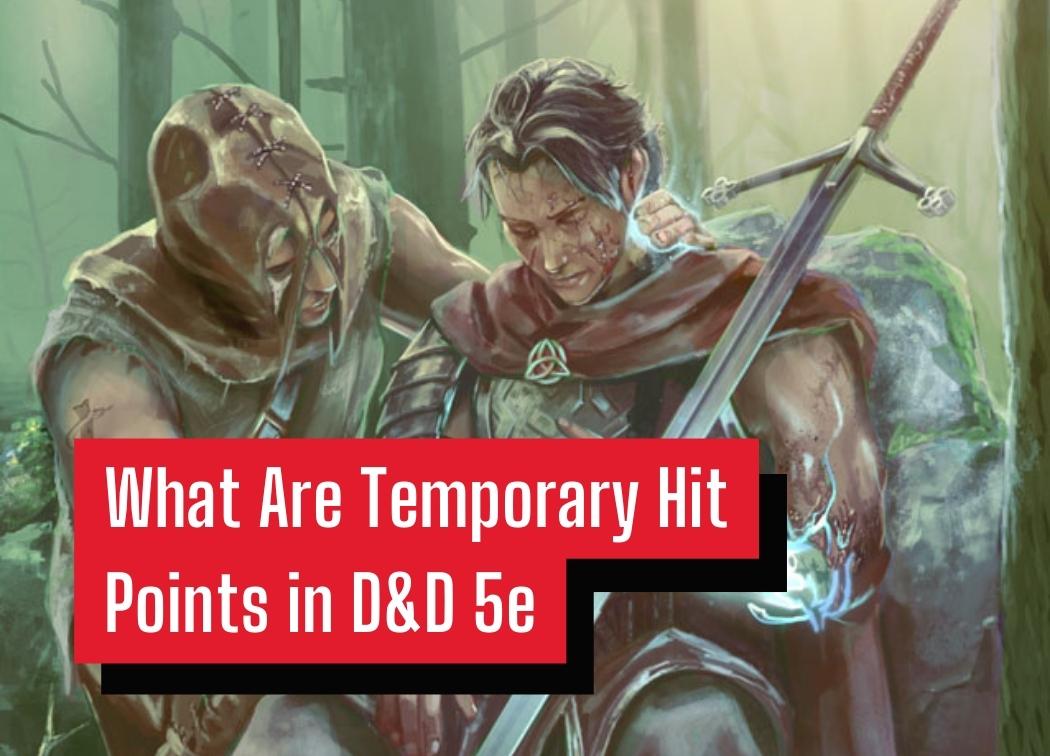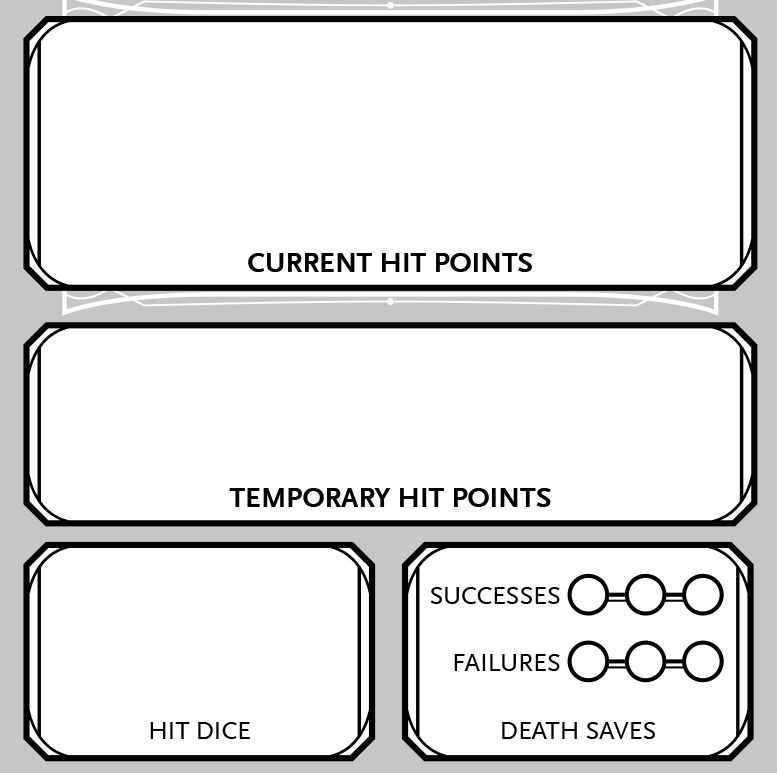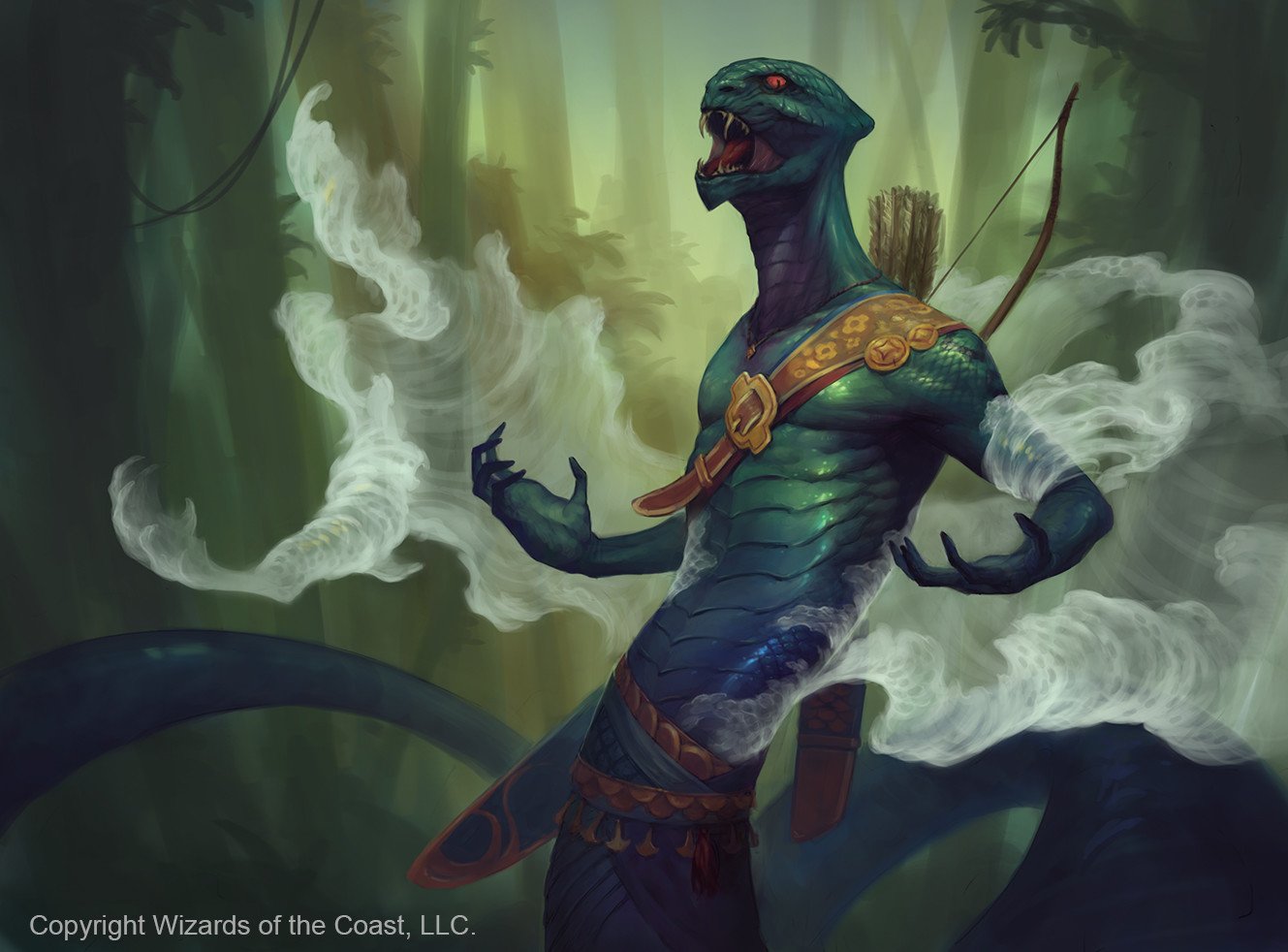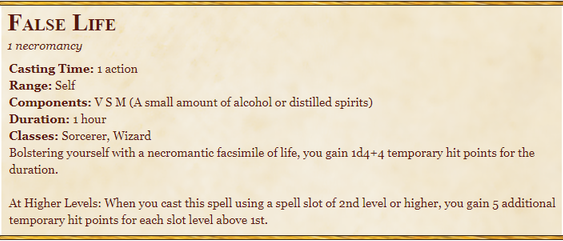What Are Temporary Hit Points in D&D 5e?

Temporary hit points or “temp HP” is a mechanic in D&D 5e that introduces the concept of absorbing damage into the game. While this is a prominent mechanic in a lot of video games, I can’t say the same for tabletop RPGs. I definitely felt it was interesting inclusion to D&D 5e when I first ran into it.
However, depending on your party composition you may never make use of it, but I can assure you it’s there and they can be a welcomed buffer to protect yourself in the heat of combat. Certain classes and archetypes may find temp HP more prominent in their spell list or archetype.
It’s a unique mechanic that I find often gets used as “extra HP”. However, the rules on page 198 of the Player’s Handbook (PHB) are pretty clear that they both have a similar function, but completely different execution.

Mechanics of Temporary Hit Points
Think of temporary hit points as a secondary HP. Once you gain some temp HP you treat it as you would your HP. It can absorb damage and you mark down how much of it you have left after you take a hit. In this sense, it’s mechanically the same.
However, there are a few caveats. The first of which is that once a character has temp HP, any damage dealt to that character is mitigated by the temp HP. You cannot choose to take damage and subtract it from your base HP. It comes out of your temp HP pool first.
Another cool thing about temp HP is that it lasts until the end of your next long rest unless the spell or feature that grants you the temp HP states otherwise.
What Can’t They Do?
That’s simple enough, right? Well, there are a few more unique properties of temporary hit points that we need to highlight still. These specific properties are where I see a lot of people misunderstand how temp HP works. So I felt it was important to specifically highlight these points in this article.
Cannot Restore a Creature at 0 Hit Points
Once a creature is unconscious at 0 HP and making death saving throws the game becomes a scramble. Is it better to dispatch of the enemy or do you rush to your friend’s aid and revive them? Everyone goes into a mad dash to save their ally from death.
One such thought might be that, “if temp HP is almost the same thing as HP it should be able to revive them just like healing would”. Unfortunately, this is not something that temp HP is able to do. You cannot revive a creature by giving them temporary hit points.
However, you can still give them temp HP. This would act as a barrier for against additional attacks, meaning they have a buffer against having damaging attacks count as failed death saving throws.
This is still a useful way to protect your ally from being slain, but it’s a very different effect compared to straight-up healing them. It’s a band-aid fix if anything.
Cannot Be Stacked
You cannot stack temporary hit points on top of each other. Once you have a set number of temporary hit points you cannot gain more. End of story.
However, if for some reason you are on the receiving end of additional temp HP you can take the higher value as your new temp HP pool.
For example, if you have 5 temp HP and your ally uses the Inspiring Leader trait to give the party 8 temp HP you can choose to have 8 temp HP instead of your 5.
Cannot Be Restored
Once you lose temp HP it cannot be recovered. You cannot spend hit dice or have healing magic restore your temp HP. It’s a set value.
The only way to increase your temp HP is by receiving temp HP that is more than your current temp HP.
Thematics and Flavor
The cool thing about temp HP is that it’s not a mechanic that’s shoehorned into any one class or archetype. There are many different ways to acquire temp HP or give some to your allies. Meaning that there are a plethora of different flavors of what temp hp could be described as.
Necromancers could create a dark energy field around them that wards away incoming attacks. It could be like a veil of shadows that slowly disperses the more damage it absorbs.

Divine casters could make a holy bubble or a barrier that shrinks until it pops after taking enough damage.
Temp HP could even be explained as just pure fighting spirit or adrenalin. You’re inspired or pinned up against the figurative wall and have to push yourself past your typical limits. Maybe an ally gave you inspiration to do so!
Some Ways to Gain Temporary Hit Points
Throughout the many official D&D 5e books and piles of homebrew content, there are tons of ways to give yourself or others temp HP. It would be tedious to go through each one, so instead, I’ve taken a sampling of some of the most common temp HP mechanics I’ve run into in my games.
False Life – Level 1 Spell
Possibly the most common way to gain temp HP in my experience is from the False Life spell. Sorcerers and wizards have access to this spell and it’s a decent way to get a low-cost 6.5 temp hp buffer to beef yourself up before combat.
It lasts an hour so it’s perfectly reasonable to cast it prior to entering a dungeon or some hostile area. This isn’t a spell that you should cast in the midst of battle unless you’re truly out of better options.
The Fiendish Vigor Warlock Eldritch Invocation lets the warlock cast False Life at will. This is actually a pretty interesting choice and it can be a real difference maker especially in the early game.
It’s fairly low-risk to take this invocation as well if you’re worried about optimization. You can replace a known invocation after a level-up you can always drop Fiendish Vigor once it stops being noticeably useful.

College of Glamour – Bard Archetype
The College of Glamour Bard Archetype from Xanathar’s Guide to Everything gives bards a new way to spend their Bardic Inspiration. Instead of granting a Bardic Inspiration die to a character, they can instead use Mantle of Inspiration.
This gives a few cool benefits to multiple creatures close to you, but one of these benefits is to give each creature 5 temporary hit points. It’s not a lot, but it’s a nice benefit that’s tacked onto some additional movement speed.
Inspiring Leader – Feat
I said earlier that anyone can dish out temporary hit points if they were so inclined. This wasn’t an exaggeration. If you have a Charisma score of 13+, you can take the Inspiring Leader feat.
This allows you to spend 10 minutes to give up to 6 allies within 30 ft. of you temporary hit points equal to your level + your Charisma modifier. Since this recharges on a short rest you can literally do this after each short rest.
Conclusions
The easiest way to understand temporary hit points is to think of them a buffer for your HP. They exist to take the brunt of the damage so that your character’s actual health pool takes whatever damage is leftover from the attacks. They’re a cool support mechanic that I wish got a bit more love in 5e.
The most important thing to remember is that temp HP and HP are different in their functions when a character is at 0 HP. While regular healing will bring the character back to the world of the living, tossing them some temp HP will only protect them from further damage.
I’d love to see a support caster archetype or class that uses temp HP to give their allies barriers sort of like a WoW Discipline Priest. As it is I don’t see this mechanic get enough love in many cases.
As I said before, it really depends on what the party is playing if temp HP even comes up frequently in your game. It’d be interesting to see how the game would be impacted by having a role or more spells to bring temp HP more into the spotlight in combat encounters.

So question?
If I have a source of Temporary Hit Points (say 5), and I have a new source of Temporary Hit Point (say 8) I can choose to take 8. Great.
If I had 5, and lost 4; so I am down to 1. Then some one gives me a spell that grants 8… Do I have 8 now, or do I get +3 from the new spell being 3 more than the last spell, now putting me at 4?
This comes from a Warlock with False Life at 2nd level. My player wants to be able to cast it every round all day long or potentially 8640 first level spell effects in a day (very broken to all other 3rd level players.)
I ruled that it lasts an hour (as that is the duration) and he can not recast it, limiting it to 24 1st level spell effects a day. I further allow him to ritual cast it, for max hit points if he wants to take the time because he knows he is going into battle. But the duration is 1 hr, and he can not stack it.
-=-=-=-=-=-=-=-
His argument is; if he casts it, then uses all of them and is at 0 temp hit points, he should be able to cast it again and get more. This is more powerful than any 2nd level cleric that can only cast 3 cure lights a day! (I know its not quite the same as a cure light.)
Being an eldritch blaster chucking warlock in medium armor he has a high AC, and I barely hit him, he want to use temp hit point, then recast and refill the hit points the next action. Making him very broken compared to other characters at this level…
Thanks
Nope! You can only have one source of temporary hit points so you need to choose which source.
You also cannot stack false life like that as each cast of false life is a new source of temp HP.
So at max your player’s warlock can gain 13 temp HP from their False Life cast. At base it grants 1d4+4 temp HP + 5 for each spell level over 1st they cast it at. 4 + 4 + 5 = 13.
What they can do instead of stacking is cast False Life until they hit their maximum amount of temp hp. Since they have unlimited casts of it they could keep casting fals life outside of combat until they hit 13 temp hp. Keep in mind it only lasts 1 hour though!
I enjoyed this article. But I have to disagree with the “buffer arguement” when giving temp hp to a downed character. Even if 10 temp hp were granted, taking even 1 hp of damage when unconscious should still result in an automatic failed death save. Any damage taken. Think about retaining concentration. Even if damage comes from temp pool only, its still damage and a concentration save is still needed.